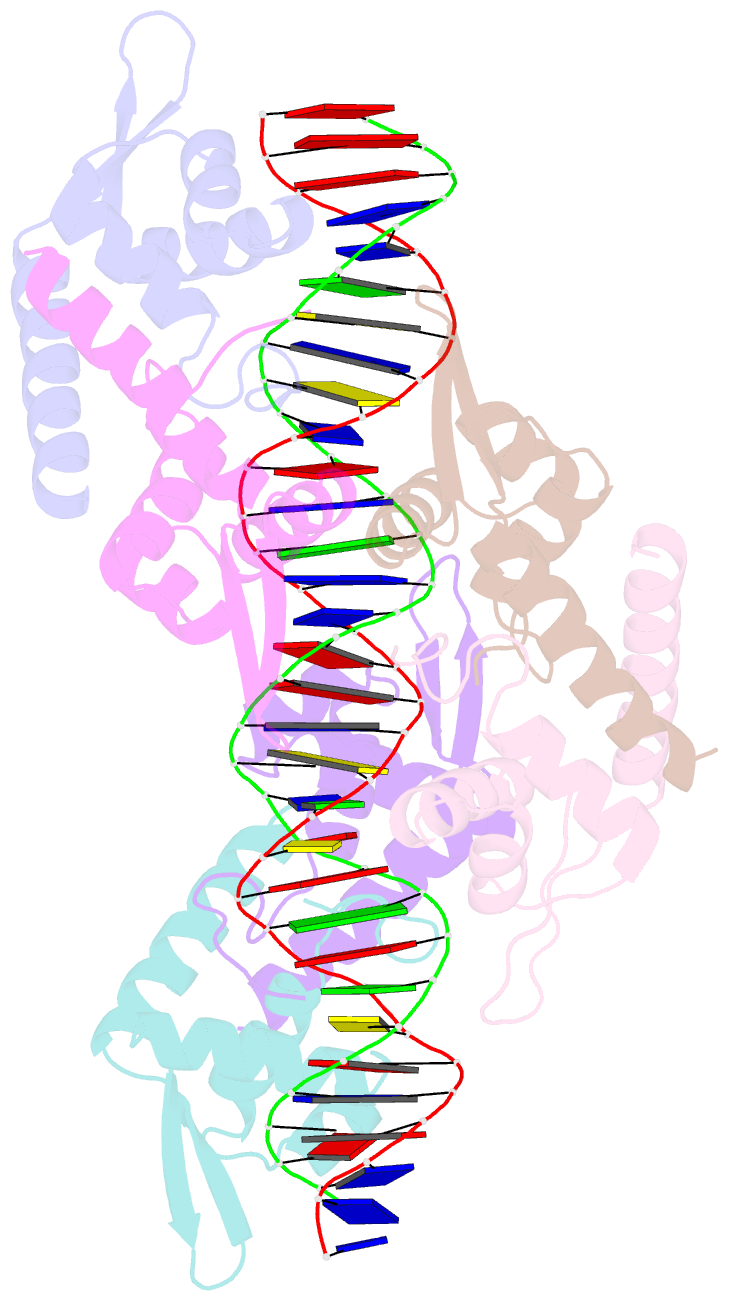Summary information and primary citation
- PDB-id
- 5k5q; SNAP-derived features in text and JSON formats;
DNAproDB
- Class
- transcription-DNA
- Method
- X-ray (2.649 Å)
- Summary
- Structure of aspa-DNA complex: novel centromere bindng protein-centromere complex
- Reference
- Schumacher MA, Tonthat NK, Lee J, Rodriguez-Castaneda FA, Chinnam NB, Kalliomaa-Sanford AK, Ng IW, Barge MT, Shaw PL, Barilla D (2015): "Structures of archaeal DNA segregation machinery reveal bacterial and eukaryotic linkages." Science, 349, 1120-1124. doi: 10.1126/science.aaa9046.
- Abstract
- Although recent studies have provided a wealth of information about archaeal biology, nothing is known about the molecular basis of DNA segregation in these organisms. Here, we unveil the machinery and assembly mechanism of the archaeal Sulfolobus pNOB8 partition system. This system uses three proteins: ParA; an atypical ParB adaptor; and a centromere-binding component, AspA. AspA utilizes a spreading mechanism to create a DNA superhelix onto which ParB assembles. This supercomplex links to the ParA motor, which contains a bacteria-like Walker motif. The C domain of ParB harbors structural similarity to CenpA, which dictates eukaryotic segregation. Thus, this archaeal system combines bacteria-like and eukarya-like components, which suggests the possible conservation of DNA segregation principles across the three domains of life.





